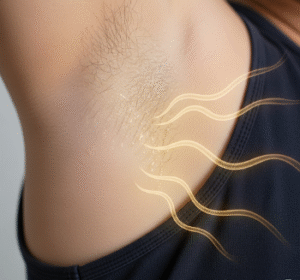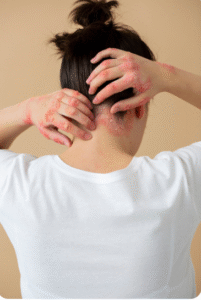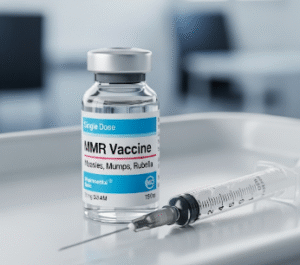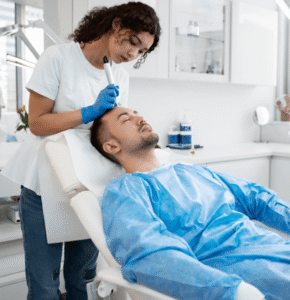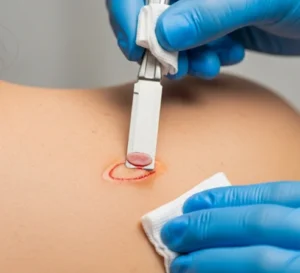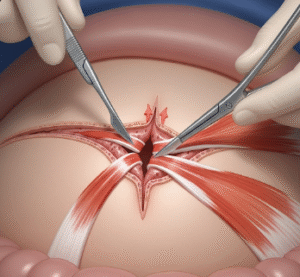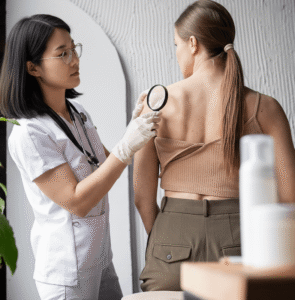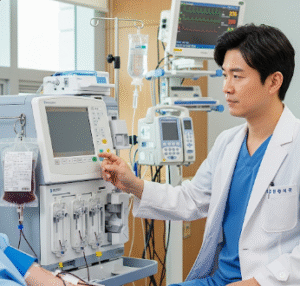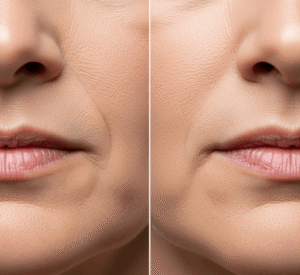What it is
➝ Low-dose doxycycline is an oral treatment used for rosacea, a chronic inflammatory skin condition that causes redness, visible blood vessels, papules, and pustules on the face.
➝ Unlike standard doses of doxycycline (100–200 mg daily), low-dose regimens (usually 40 mg modified-release or 20 mg twice daily) are sub-antimicrobial—they do not act primarily as antibiotics.
➝ Instead, they work by reducing inflammation, blocking enzymes (like matrix metalloproteinases), and decreasing inflammatory mediators that contribute to rosacea flare-ups.
➝ This makes low-dose doxycycline effective for long-term control of rosacea without the risks associated with high-dose antibiotics.
Why it’s done
→ To reduce inflammatory papules and pustules (acne-like lesions) associated with rosacea.
→ To improve redness, swelling, and skin sensitivity.
→ To offer a safer long-term oral therapy without significantly disturbing gut flora or increasing antibiotic resistance.
→ To complement topical therapies such as metronidazole, azelaic acid, or ivermectin cream.
→ In Korea, it is prescribed widely in dermatology clinics for patients with moderate inflammatory rosacea or those not responding adequately to topical treatments.
Alternatives
→ Topical treatments:
- Metronidazole gel or cream.
- Azelaic acid gel or foam.
- Ivermectin cream (anti-inflammatory and anti-parasitic).
- Brimonidine or oxymetazoline cream (to reduce persistent redness).
→ Other oral medications:
- Standard-dose doxycycline (short-term).
- Minocycline or tetracycline.
- Isotretinoin (for resistant cases).
→ Laser and light therapies: Pulsed dye laser (PDL), intense pulsed light (IPL), and Nd:YAG laser for persistent redness and visible blood vessels.
→ Lifestyle measures: Avoiding triggers such as alcohol, spicy food, heat, and stress.
Preparation
→ A dermatologist will confirm the diagnosis of rosacea and assess severity.
→ Baseline labs are not always required for low-dose doxycycline, but may be done if patients have liver or kidney issues.
→ Patients are advised to:
- Take the medication with water to prevent esophageal irritation.
- Avoid excessive sun exposure and use sunscreen, since doxycycline may cause photosensitivity.
- Avoid taking it with dairy or antacids, which can reduce absorption.
→ In Korea, dermatologists provide patient education on skincare routines, including gentle cleansers and moisturizers, alongside oral therapy.
How it’s Done
→ The most common regimen is 40 mg modified-release once daily or 20 mg twice daily.
→ Treatment typically lasts 8–12 weeks, but can be extended for long-term control if needed.
→ It is usually combined with topical rosacea treatments for optimal results.
→ Korean clinics may prescribe it as part of stepwise therapy, adjusting dosage or combining with laser treatments if redness persists.
Recovery
→ Improvement is often visible within 3–4 weeks, with reduced bumps and redness.
→ Significant improvement is usually seen by 8–12 weeks.
→ Patients often report less skin burning, irritation, and flushing episodes.
→ With continued use, flare-ups become less frequent and easier to manage.
→ Once stable, dermatologists may taper treatment and maintain control with topical therapies.
Complications
→ Mild side effects: Stomach upset, nausea, diarrhea, or mild headaches.
→ Photosensitivity: Patients must avoid prolonged sun exposure and wear sunscreen daily.
→ Esophageal irritation if taken without enough water or right before lying down.
→ Yeast infections (rare at low doses compared to full antibiotic doses).
→ Unlike higher doses, low-dose doxycycline does not contribute significantly to antibiotic resistance.
Treatment Options in Korea
→ Widely available in Korean dermatology and aesthetic clinics as a trusted oral therapy for rosacea.
→ Frequently prescribed in combination with topical treatments (e.g., ivermectin, metronidazole) and laser therapies for redness.
→ Korean dermatologists emphasize gentle skincare regimens, pairing low-dose doxycycline with K-beauty approaches such as barrier-restoring moisturizers and calming serums.
→ Some hospitals also integrate laser treatments (IPL, PDL) with oral therapy to address both inflammatory and vascular aspects of rosacea.
→ Low-dose doxycycline is valued in Korea for its safety, convenience, and effectiveness in long-term rosacea control, making it a preferred systemic option before moving to isotretinoin or biologics in resistant cases.


